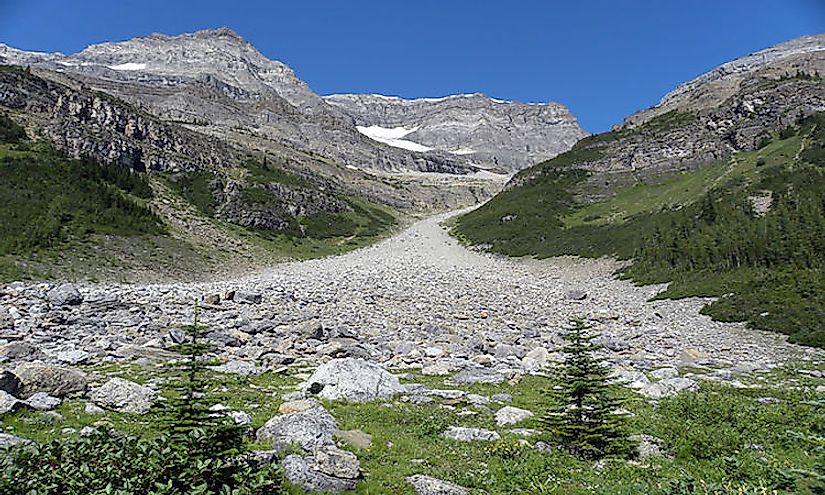Fluvial landforms: What Is An Alluvial Fan And A Bajada?

Rivers are important features in any ecosystem. Apart from providing water for the different needs, it can also be dragged by gravity across the Earth to form some of the most beautiful landmarks, especially in the valleys. The flowing waters carry with it the alluvium across its path. The alluvium consists of soil, and small rock particles picked up by the river as its flows. The alluvium is deposited on flat plains where smaller streams fan out across the plain. Over time the deposits stand out from the surrounding landscape to form a unique feature called alluvial fans. The alluvial fans formed range from just a minuscule to a massive sculpture that can be seen from the space. Alluvial fans are either cone or fan-shaped in nature. When an alluvial fan is built by debris flow, then it is referred to as debris cone or colluvial fan.
Bajada
Alluvial fans formed on plains may also coalesce along a mountain to form a feature that is commonly referred as Bajada. Bajada is a Spanish word which is often used to describe a landscape or geomorphology and mean inclination or descent. Bajada is common in a dry climate such as the Southwestern US where the flash floods deposit alluvium over time to form series of alluvial fans that coalesce to form the Bajada. Bajadas can also be formed on wetter climate with streams continuously depositing sediments.
Formation Of Alluvial Fans
Alluvial fans are mainly formed by rivers but can also be formed by streams. The rivers and streams gather sediments or particles of soil and small rocks as it flows towards a particular direction. As the gradient of the river or stream decreases, it drops small rock particles reducing the capacity of the channel which forces the river to change course. The stream or the river gradually builds a slightly mounded conical fan shape with the sediments deposited at the apex of the fan. Alluvial fans are mostly coarse-grained, especially at their mouth but are relatively fine-grained at their edges.
Occurrences Of Alluvial Fans
Alluvial fans are common in desert areas characterized by flash floods in the nearby hills. The watercourses in desert areas are large funnel-shaped basin at the top which opens up to alluvial fan. Alluvial fans are also common in wet climate. The Koshi River in Nepal has built a mega alluvial fan which covers an area of 15,000 square kilometers at the point where the river traverse into India. The streams flowing into California Central Valley in North America have also deposited some sediment forming alluvial fans. The largest alluvial fan in the world is formed in the Taklimakan desert in China. The alluvial fan is 56.6 km wide and 61.3 km long with parts of the fan alive with water which flows from Molcha River. Apart from the earth surface, alluvial fans are also found on Mars and other parts of the solar system.
Hazards Related To Alluvial Fans
Alluvial fans can be more dangerous during flooding than the upstream canyons which feed them. Their shapes cause the water to spread widely covering larger areas. The sediments carried by the water makes the water come down the steep faster than the normal speed which might be hazardous. The active flooding poses a risk to the people living in the area as it can render people homeless and destroy crops and other properties.











